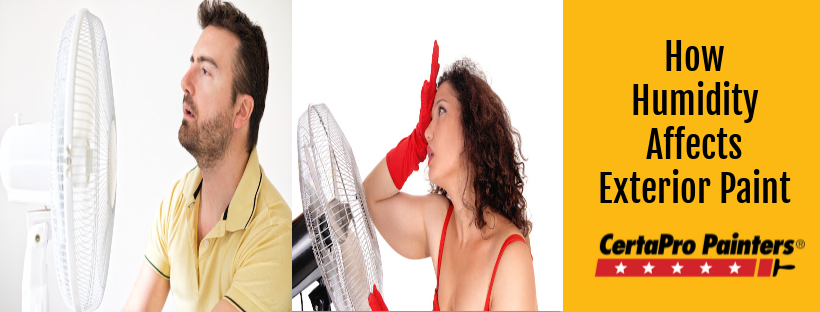
How Humid Climates Affects Exterior Painting Projects
Posted on May 31, 2022
High temperatures and humidity pose unique challenges in painting, but they can all be overcome with some research and planning. All exterior paints interact with their surroundings when applied and throughout their life. This means factors such as heat and humidity need to be understood and taken into consideration when planning an exterior painting project. High temperatures when painting can prove challenging, particularly if you are painting under direct sun.
These factors together can cause paint to dry extremely quickly, creating two pitfalls. First, maintaining wet edges is challenging, which results in louver marks on the paint body, as well as banding on caps around trim areas. Second, the paint dries so quickly on contact that you are tempted to put on a second coat before the first one has completely set. It is essential that you follow the instructions for your time frame on a second coat, otherwise, you run the risk of peeling the first one.
Direct sunlight can also affect paint life, particularly on south-facing surfaces that get more exposure. The sun (or reflecting surfaces) causes paint to heat up more quickly than the base surfaces, creating “heat bubbles” which ultimately break up and peel off. UV light from the sun also will bleach much of the paint, making it harder to apply patches and repairs.
Humidity in paints slows down drying times. In an extreme situation, air can become so saturated that the paint struggles to create adequate bonds and begins running before drying. This is particularly the case if you are painting metal, as air humidity will tend to condense onto a metal surface, creating a barrier of moisture between the surface and the paint.
While exact recommendations will vary depending on your location and conditions, hold off painting if relative humidity is 85% or higher. Humidity also affects the finish of outdoor paint once applied.
It can promote the growth of mildew, particularly on shaded surfaces, or those facing north, where there is less sunlight. The first step to combating heat and moisture is selecting the proper materials for your job. If you know that the surface will be shady and exposed to wet conditions, consider using mildew-resistant paints or mildew-cide additives. For projects that are exposed to sunlight, you can choose paints that are specifically designed to withstand fade.
And, if your project deals with extreme heat, like a grill or a fire pit, choose a special paint designed for that type of application. Once you have got your paint, go into your project with some extra thought. Accept that painting your exterior is weather-dependent, and you might not get the chance to paint the day you want. This sounds easy, but a lot of outdoor paint projects end up being frustrating, as the painters try to do a “last coat before the rain comes down” only to discover a splotchy mess after storm clouds have cleared.
Also, consider how much sunlight is coming from your location. Note which parts of your design are shaded, and how this changes throughout the day. Time the project to have most of your work done either before or after the warmest time of the day. And look at what the weather forecast calls for.
Sometimes, a cloudy day means that you really do not need to worry about sunshine at all. It is always worth doing some extra planning to avoid streaky finishes.
These are just a few important things to be aware of when planning any exterior painting project. CertaPro Painters are the experts when it comes to planning & executing fabulous exterior projects. Do you have an exterior painting project you would like to start?
Call CertaPro Painters of Boynton Beach at 561-318-0221 or go online to schedule an estimate!





